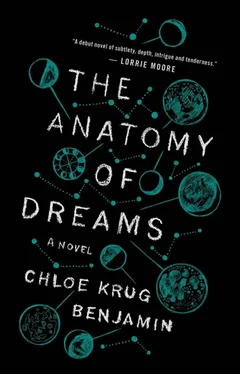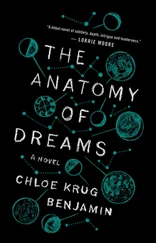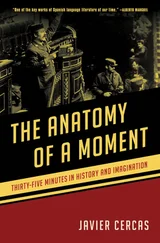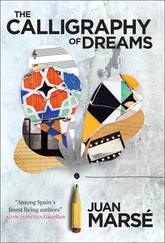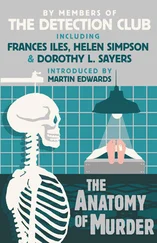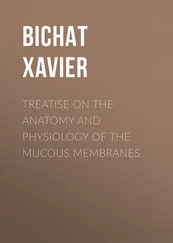I thought I was back to my old patterns until a cold Tuesday morning in the beginning of December. I dreamed of Thom; this time, there was no mistaking it. We were in an enclosed, dimly lit space with a desk and one chair, but we huddled on the floor as if in a bunker. Spread across the floor in front of us were old photographs that Thom showed me one by one. A dull, dusty-chained bulb provided a dim shaft of light. An orange cat slipped between us, purring.
I could see myself, but I was apart from myself. Like a ghost, I watched the dream me sitting with Thom on the floor — watched as he lifted the next photograph into the light, which showed a grand brick building on a hill. Below the building was a dusty path, flanked by tree trunks and globe lamps that glowed whitely as moons.
“Alumni House,” said Thom. “It’s this fancy building that was gifted to the college by two filthy-rich sisters — Rose and Blanche something. All the rich alumni could sleep there whenever they were in town, and the place had a restaurant that hosted all sorts of schmoozy, hobnobby events. He used to take Janna there. I wanted so badly to get inside. I used to stand at the bottom of the hill, just taking pictures of the damn thing.”
His face floated toward me with the 3D transparency of a hologram. He reached for me with one hand. I ducked, but I wasn’t fast enough, and he plucked something from my ear. I felt a pock , the hollow release of suction, and he held out his palm. Something fuzzy, black and yellow-spotted, wriggled inside it: a caterpillar. Suddenly, the hand was Gabe’s — I saw his broad, callused palms, his long lifeline. The caterpillar inched its way across his wrist, and I felt nauseous.
“That came — out of me?” I asked. I put my finger in my ear. Empty as a whistle.
“Dreadful sorry, Clementine,” sang Gabe.
I woke at five thirty, my chest heaving, my collarbone slick with sweat. The windows rattled, our curtains slivered apart by the cold air that came through a crack in the pane. I looked at the window, my body turned away from Gabe, as my heart rate came down. Snowflakes clung to the glass like tiny skeletons.
When I turned around, Gabe was propped up on one elbow, staring at me. We looked at each other in silence.
“Bad dream,” I said finally.
Gabe shook his head.
“But you never remember your dreams,” he said.
“I know,” I said. “It’s odd.”
Gabe was staring at me with a bare kind of exhaustion — or was it resignation? He opened his mouth, then seemed to think better of it.
“Sleepy Sylvie,” he said, inching across the space between us, collecting me into his arms.
11. MARTHA’S VINEYARD, MASSACHUSETTS, 2002
When I look back at the rest of that first summer in Snake Hollow, I am tempted to say — as much as I resist this sort of statement — that it was the best time in my life. The thrown-together dinners, Gabe chopping zucchini and eggplant, Keller pouring salt crystals into a pot of bubbling water while flipping strips of pancetta with the many-armed grace of a Hindu god; Keller taking us out to the glass-littered beach at night, striding through the dune grass and salt-marsh hay with boyish enthusiasm—“Look!” he said, “feel something, for God’s sake — get out of yourselves”; or sitting with Gabe on the floor of the library as Keller strode between us — spun through the room, it seemed to me, in my three A.M. haze ( When does he sleep? I often wondered) — his voice ricocheting off the walls, the dim lights of the library flickering in his wake.
“We are living in a twenty -four/seven culture,” he said. “Convenience stores are open at all hours of the day. Twenty percent of the working population in developed countries works the night shift. Planes take off and land, universities hold classes, hospitals are staffed, all during the night hours traditionally reserved for sleep. Human beings are more productive than ever before, but they’re also unhappier. They feel oppressed by the limits of their lives: the boredom, the repetition, the fatigue. What if you could use your sleep to do more— to receive all of the traditional regenerative benefits while problem solving, healing, even experiencing alternate worlds?”
He was jittery with enthusiasm, pacing the library like a teenager. Earlier that day, Gabe and I had traveled to Boston to watch Keller give a talk on lucid dreaming. He was even more dynamic than he’d been at Mills, his voice carrying through the auditorium, his limbs shot through with energy; it was as though, like Benjamin Button, he was aging in reverse. “This freedom, hard to imagine within the constraints of waking life,” he boomed, “is astounding, exhilarating, and inspiring. The laws of science and society are abolished. The possibilities are boundless, and the choices are yours. Wouldn’t you be capable of extraordinary things?”
A college student with a bushel of red hair raised her hand. She stood when Keller called on her.
“Okay,” she said, “but people are capable of terrible things, too. What if somebody wanted to dream about hurting someone? Or killing them?”
“You’re right: violence is a part of human nature,” said Keller. “But if those urges can be experienced and processed safely, within the construct of a dream, they can be put to rest.”
“And if they aren’t put to rest?” shouted a man in the front row. “What if it doesn’t work?”
“There will always be people who aren’t helped by our research. Successfully matching patient to treatment is as complex as any marriage, and it does require trial and error. But most of the patients I see are capable, while dreaming, of being at their best: their most resourceful, their most creative, their most intuitive.”
Gabe and I had similar conversations with Keller at Snake Hollow, sitting around the dinner table or sprawled on the leather couches in the library. At these moments, Snake Hollow felt almost like Mills — or some bare-bones version of Mills, the school stripped of its landscape and buildings and students until all that was left was Gabe and Keller and me. Keller taught us his theory of interactive lucid dreaming, the same theory that would later bring us to Madison. His research participants were what he termed interactives: people who, due to a medley of possible disorders, exhibited unusual activity in sleep.
Keller’s participant criteria were so specific that his applicants were few in number but generally ideal in demographic. They had to have vivid dreams that they could at least partially recall; they had to have been aware of at least two episodes of sleep activity in the past six months, whether through their own report or that of a partner; they could not be taking any pharmaceutical or recreational drugs; and they could not have been diagnosed with any psychiatric illness unrelated to sleep. Most of the patients who came to us had struggled for years to control themselves. Some had resorted to sleeping zipped-up in sleeping bags; others tied themselves to their bedposts and cleared their rooms of breakable objects before sleep.
Our patients were usually diagnosed with one of two disorders: somnambulism, also known as sleepwalking, or REM behavior disorder, RBD. Both cause the loss of muscle atonia, the physical paralysis that normally occurs during REM sleep. As a result, these patients — who often suffered from trauma-related nightmares — were able to rise from bed and act out their dreams. The differences between the two disorders may have seemed small to an outsider, but they were significant to us. Patients with RBD rarely open their eyes or leave their bedrooms, but they have nightmares that cause them to violently, clumsily defend themselves. As a result, they’re prone to injury and unintentional destruction: an RBD patient might topple a table, slam into a dresser, or hurt the very real body of the partner lying beside them. Sleepwalkers are more dexterous, capable of complicated motor skills, sexual activity, and conversation; many can even drive.
Читать дальше
